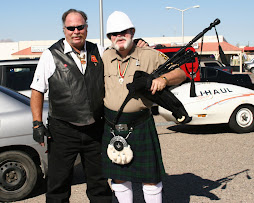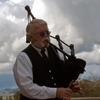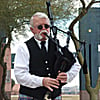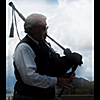 I was watching the ads appearing on the side bar here and I saw one for”learn2pipe” a DVD tutorial by Pipe Major R Pinkman. Well… I decided to give it a try.
I was watching the ads appearing on the side bar here and I saw one for”learn2pipe” a DVD tutorial by Pipe Major R Pinkman. Well… I decided to give it a try.It was without doubt the best $40.00 I have ever spent! Mr. Pinkman’s course is complete, sufficiently detailed, and VERY well illustrated. He walks you through the very basics of holding the chanter properly, finger positions on the chanter, the scale, grace notes, doublings, triplings, tachums, grips or leumluaths and toarluaths and includes a nice repertoire of tunes. Naturally you must provide the effort to practice.
Now, will this make you a piper in 48 hours? Absolutely not! But, if you live far from a qualified instructor as I have for most of my life, then this is the very best alternative I have ever seen and I must tell you I have tried many. If you treat each lesson as a private tutoring session, practicing diligently each week in between, you will amaze yourself. In addition you will not spend much of your life as I have “un-learning” mistakes.

This package can be ordered at learn2pipe.com. Do not be put off by the basic nature of Mr. Pinkman’s web page; after all it is his teaching you are buying not his skill as a graphic designer. As soon as you make payment, you will be directed to a website where you can download the entire course onto your computer or play it directly from the Web site. The DVDs will arrive by mail with in a few days.
If you want to learn to pipe and for whatever reason can not get a qualified instructor then you must get this course. It is just that good!

























